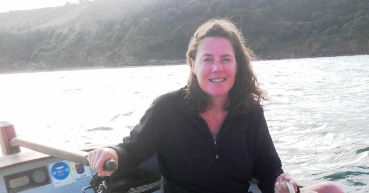January 2016
In 2013 Defra designated 27 MCZs and the latest 23 sites, announced today, bring the total MCZs around England up to 50. This is a really positive step for our seas. Among the newly created MCZs are Cromer Shoal Chalk Beds - the longest chalk reef known in Europe; Farnes East - one of the deepest patches of the North Sea, reaching to between 30-100 metres in depth; Greater Haig Fras - the only substantial area of rocky reef in the Celtic Sea and Mounts Bay covering St Michael's Mount and the Marazion area - home to important species such as seagrass, stalked jellyfish and crayfish.
Although these 50 sites are still some way off the original number proposed five years ago, Government has confirmed it will develop a third tranche of MCZs in 2017/18. The third tranche of MCZs, if large enough, should ensure England makes its contribution to the UK Ecologically Coherent Network of Marine Protected Areas (MPAs). The latter is what scientists in NGOs, Government, academia and international institutes agree is needed to start to see real recovery in our seas in the NE Atlantic. MPs across the house also agree and, in 2015, we at Link managed to get over 170 of them to sign The Marine Charter to this effect. This, and other advocacy work, resulted in MCZ commitments appearing in all party manifestos including the Conservatives, so Government is committed to designating a “blue belt” of Marine Conservation Zones.
The UK’s final network will consist of Marine Conservation Zones around England, Wales and Northern Ireland; Nature Conservation Marine Protected Areas around Scotland, Special Protection Areas (SPAs) for Birds and Special Areas of Conservation under the Birds and Habitats Directive and Sites of Special Scientific Interest. The key principles to ensure the network of MPAs is “ecologically coherent” include representivity, connectivity and adequacy (size). The third tranche will need to be ambitious and include sites such as South Celtic Deep - a site that supports short-beaked common dolphin -Norris to Ryde, which is rich in seagrass meadows, Mud Hole off the north west coast - 35 metres deep and home to rare sea pens - and Compass Rose off the Yorkshire coast, which is an important spawning and nursery ground for herring and lemon sole.
Once Defra has designated a third tranche of MCZs, along with some more Special Protection Areas (SPAs) and Special Areas of Conservation (SACs), and the devolved countries have done likewise we hope the UK will have at last completed its network by 2018. This will be six years after its original commitment under the Oslo and Paris Convention for the NE Atlantic, but better late than never.
Meanwhile we are working hard to ensure Government properly protects these sites. Following a legal challenge by a few of us NGOs in 2012, Defra has introduced a new approach to managing fisheries in European Marine Sites and gradually byelaws are being introduced to prevent trawling and dredging from damaging features. However, there is still a lot of work to be done and still ongoing debates about what constitutes damage.
Melissa Moore
Head of Policy at MCS
Vice-Chair Link Marine Working Group
Find me on Twitter at @melissamooremcs
The opinions expressed in this blog are the author’s and not necessarily those of the wider Link membership




Latest Blog Posts